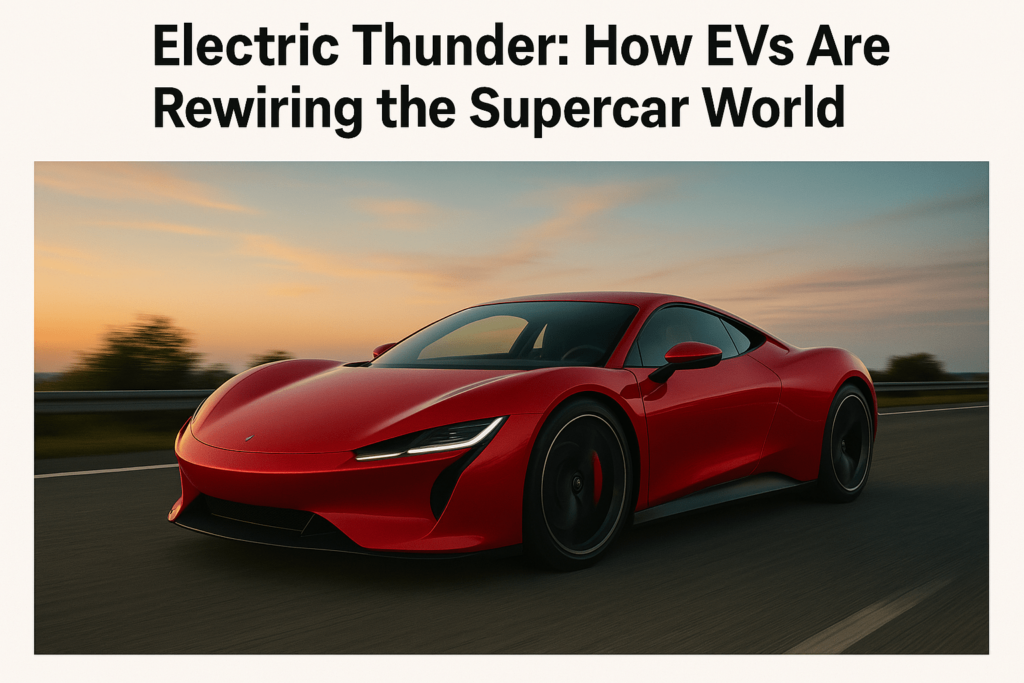For decades, the formula was simple: if you wanted power, you needed pistons, combustion, and a symphony of exhaust notes echoing through the hills. But that’s changing—and fast. Electric vehicles, once thought to be the enemy of driving excitement, are now redefining what it means to be a supercar.
Welcome to the electric revolution—where torque is instant, silence is the new roar, and the future is already here.
Torque That Defies Belief
The first thing you notice in an electric supercar is the launch. There’s no build-up, no turbo lag—just instantaneous, neck-snapping acceleration.
The Rimac Nevera and Tesla Roadster 2.0 claim sub-2-second 0-60 times, numbers that were previously reserved for dragsters and fantasy. With four motors and all-wheel torque vectoring, the Nevera isn’t just quick—it’s surgically precise.
Electric motors deliver 100% torque from a standstill, meaning these cars leap off the line like nothing else. It’s not just fast—it’s shocking.
Rewriting the Rules of Design
Because electric powertrains are so compact, designers have a lot more freedom. Batteries are usually stored in a flat skateboard layout, lowering the car’s center of gravity and enhancing handling.
Look at the Lotus Evija, a 2,000-hp EV hypercar with sculpted aerodynamic tunnels running through its body. It looks like something that belongs in a video game—and it performs like it too.
The Pininfarina Battista combines Italian design flair with 1,900 horsepower and a serene, spaceship-like interior.
These cars are more than green—they’re gorgeous.
Sustainable Doesn’t Mean Slow
One of the most persistent myths about electric cars is that they’re soulless or boring. But today’s EV supercars prove otherwise. Their silence amplifies other sensations: the g-forces, the grip, the rush of acceleration. It’s a different kind of drama—but drama nonetheless.
More importantly, EVs offer a future-proof solution to emissions regulations that are increasingly squeezing traditional supercars out of existence.
Brands like Ferrari, Lamborghini, and Aston Martin are all developing hybrid or full-electric models. The era of screaming V12s may not be over yet—but its days are numbered.
Challenges Remain
Range anxiety, battery weight, and charging infrastructure are still hurdles for electric supercars. It’s hard to track a car all day when it needs 45 minutes to recharge. But solid-state batteries and fast-charging networks are rapidly improving.
And let’s be honest—most hypercar owners aren’t daily driving their $2 million EV.
The Future Is Now
Electric supercars are not prototypes anymore. They are real, purchasable (if you’re rich), and they perform better than anyone expected. The shift is happening, and it’s being led by visionaries who aren’t afraid to swap fuel for electrons.
In this new world, silence is the new sound of speed—and it’s never been more thrilling.


